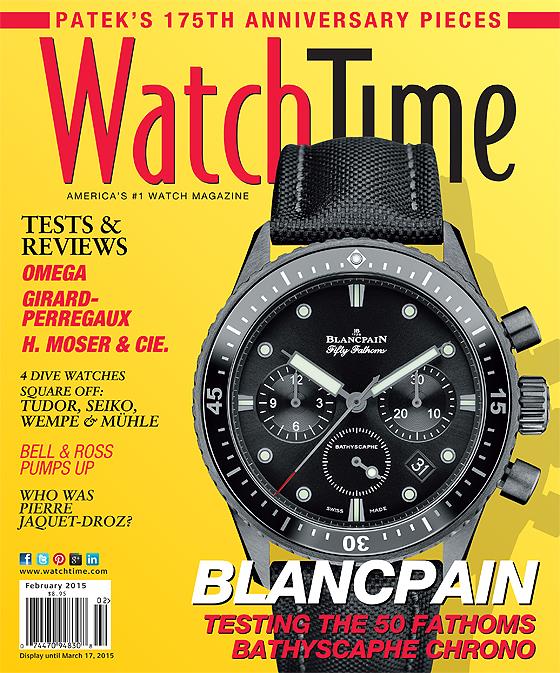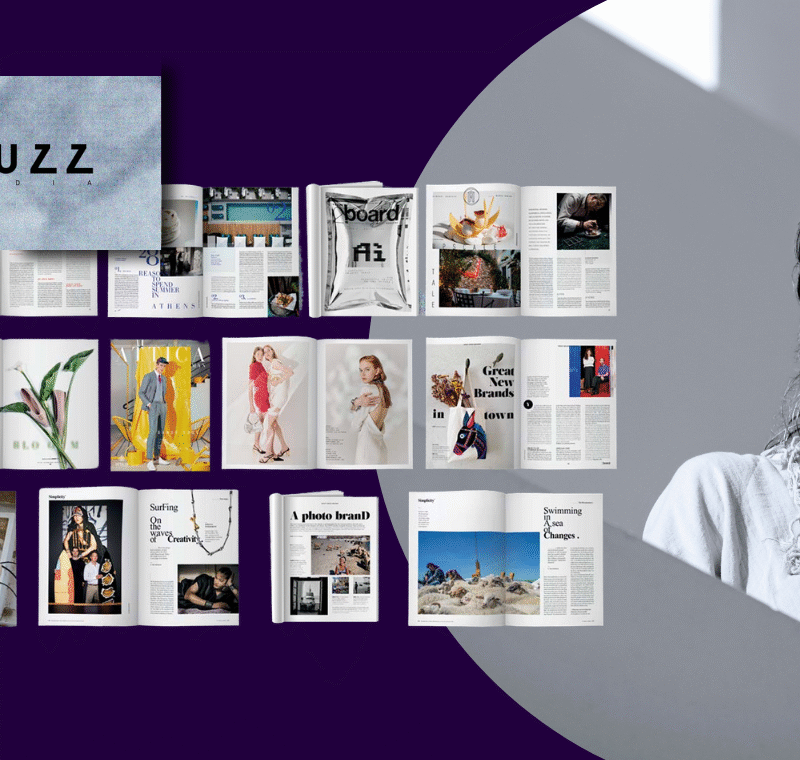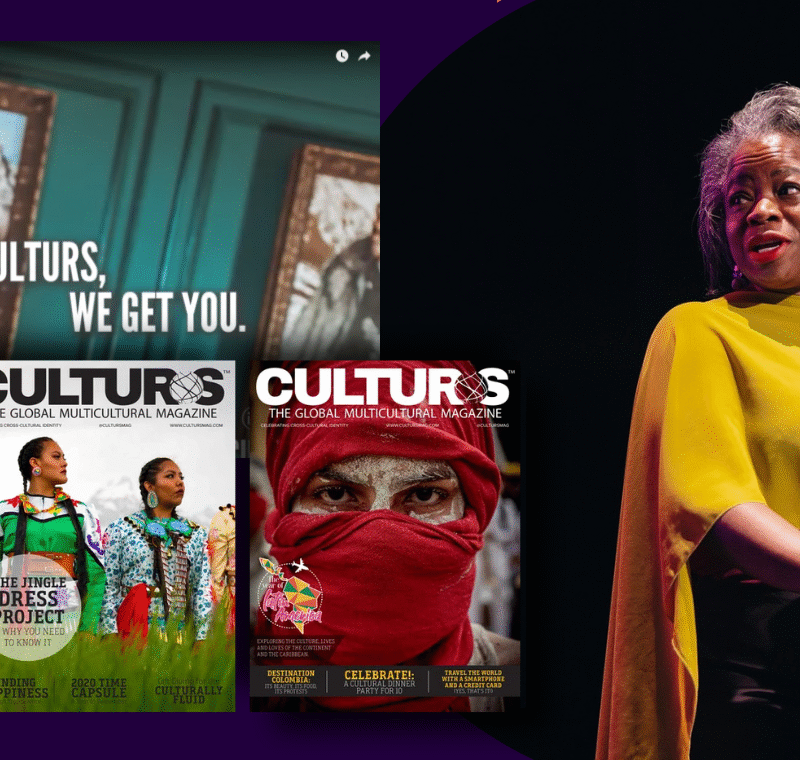How this 200-year-old publisher nails mobile (and more)
Sometimes an email lands in your inbox and you simply know: I want to know more. One such recent example was an email from Dominik Grau, managing director and publisher of Ebner Publishing International, publisher of WatchTime, and a FIPP member.
Here’s the intro to that first email: “Almost 500,000 affluent watch collectors visit watchtime.com on their cell phones every month. And 90 per cent of our 100,000 newsletter subscribers read our news mailings on their cell phones, too. This is the impressive result of our mobile first strategy.”
But this is only the tip of the iceberg.
While adopting the mobile first strategy, WatchTime has grown print circulation and revenues and the brand is profitable across the channels in which it operates.
Here is the how they did it, and the lessons learnt in doing so.

Before we talk about Ebner and WatchTime, tell us a little about yourself?
Born in Germany, I now live in the US overseeing WatchTime and Ebner’s international business. WatchTime was once a small print magazine, and under the direction of our CEO Gerrit Klein and me it launched in three more continents, became a true multi-platform brand and a world leader in mobile luxury watch content. Prior to WatchTime, I was a director at IDG, where I led the digital B2C tech business in Germany. I began my media career as a trainee at Burda in Germany, where I eventually became an editor-in-chief for content marketing. Aside Ebner, I serve on company boards, at start-up incubators, governmental accelerator programmes, non-profit initiatives as well as industry associations and I support promising young media talents in making their first career steps. (I started experimenting with websites, databases and Internet apps in the mid-1990s. But even during my studies in Europe and America I always had a strong connection with media, strategy and management, so it was a natural development to work for large media companies).
Tell us Ebner Publishing in general and WatchTime in particular?
The wider Ebner Publishing Group of Germany founded WatchTime in 1999 in New York City. Ebner is a diversified media conglomerate and is the world’s leading publisher of luxury watch magazines. The company is 200 years old, it is owned by the Ebner family of Ulm. Ebner publishes 80 magazines and 30 websites in such categories as computers, music, film, video editing, fashion, firefighters, first responders, luxury watches, print production, and design, with a total audience base across all channels exceeding 10 million.
WatchTime reaches a monthly audience of 700,000 watch collectors. It is the most successful watch magazine in North America and one of the leading watch media brands globally. WatchTime is the world’s only watch magazine with two FOLIO Fame Awards for excellence in media events, seven Digital Magazine Award nominations, a SmartCEO Future 50 Award as well as two Mequoda Rocket Award nominations for outstanding digital audience growth, an Apex Award for excellence in electronic media, a Silver Eddie Award and a Gold Eddie Award.
WatchTime has mastered the transformation from a small print publication to a large multi-channel media brand. At a time when many magazines, including watch magazines, are declining, WatchTime has dramatically increased its audience thanks to initiatives we’ve made in digital publishing.
WatchTime has had an amazing year. Tell us about the highlights?
Actually, we have had three amazing years!
- 900 per cent newsletter database increase
- 800 per cent digital subscriber increase
- 700 per cent website visitors increase
- 300 per cent increase in digital revenues
- 50 per cent increase in total advertising revenues
- 20 per cent increase in print circulation and revenues
Then there is mobile.
More than 500,000 watch collectors visit watchtime.com on their cell phones, every month. And 90 per cent of our 100,000 newsletter subscribers read our news mailings on their cell phones, too. This is the result of what we call our “mobile first strategy”. Ever since we launched our mobile website in 2012 the traffic has increased: by 100 per cent in the first year and by 300 per cent in the second year. And now, three years later, our mobile traffic is up more than 1,000 per cent versus 2012, according to the latest Google research data.
And in January we launched the world’s first 24-hour social media newsdesk for luxury watches, with staff in America and Asia. This newsdesk posts the most important, exciting and newsworthy watches, technologies and industry updates, every day, around the world.
You mentioned WatchTime was a small domestic USA only print magazine in 2011. How did you go about developing into this multi-platform brand?
We precisely defined what lies at the core of WatchTime’s brand and we defined our audience’s most pressing needs. This was the basis of a five-year plan that the Ebner Group and our CEO Gerrit Klein implemented aggressively, with a strict focus on digital channels.
We did not look at our competitors at all; we simply wanted to build the world’s best and largest media platform for watches across all channels. We call this our “watch collector outreach strategy”.
It’s actually very easy to understand: wherever the audience is, whatever device they use to consume watch content, however they share this content and whatever software they use to store and re-access information, we will be there with WatchTime.
Mobile has performed superbly for you. What lessons can you share with other FIPP members when it comes to this platform?
There are five:
1. Use smart technologies based on standard software and don’t try to ‘outbuild”’successful content management systems that thousands of customers use globally, you will end up wasting money, staff and creativity
2. Think scale and build for 80 per cent of your audience, it’s not worth investing your resources in satisfying the additional 20 per cent;
3. Create a strong content network, do not publish and forget, because the life of mobile content really only starts when it has been published: then it’s about sharing, repackaging, and republishing as often as possible;
4. Build for Apple, then for Android, then for the rest; forget Windows;
5. Apply a rigorous mobile first approach in every meeting and decision, forego desktop and tablet websites because the growth is on cell phones; do not primarily invest in building for stagnant or shrinking platforms!
Not to be outdone, print has continued to perform strongly with subscriptions in the US up 20 per cent. How did you do this?
We’ve utilised our massive digital audience base to aggressively sell subscriptions and upmarket paid services. It’s a numbers game: you know the conversion rates, you know how much revenue you want, so how much additional digital audience do you need to get there?
Print seems to be very resilient in the luxury market. Why do you think this is?
That’s where the most affluent readers are. WatchTime’s audience is among the top 5 of the wealthiest readers of all magazines and media brands in America. Our tablet audience is slightly below that level and the website/mobile audience is almost on par with tablets.
What are your views on the future of print in general?
It will shrink but it won’t die. There are so many yet undiscovered content niches and topics that deserve a well-made print product, and there are many silver surfers aged 60+ who have a genuine interest in print. And that age group is among the most affluent, which in turn means they have available funds for print and are used to the touch and emotional setup of print. On the other end of that spectrum are the 15-39 year-old readers – the Millennials. They are hardly used to print and here we will see the fastest decline.
Another impressive aspect of WatchTime’s performance is that you now have editions across four regions. A number of questions:
1. In which regions?
North America, South America, Middle East and India. Our sister magazine under the brand Chronos serve Europe, China, Korea and Japan.
2. Are these editions all in print, print and digital or are some digital-only?
Mostly print, some also have a tablet and digital component as well as events soon. [On the latter,] We plan to aggressively grow our event platforms. WatchTime has been hosting market-leading watch events for 10 years in different US cities and, for example, this year we will expand this into a large exhibition in the heart of New York in Q4 2015.
3. I’m interested in your international strategy online, do you have one website serving all markets or separate ones, serving different markets? How does it work?
The global WatchTime brand has one platform, watchtime.com. That’s where we scale and that’s where the future readers are. Watchtime.com is so large now that it infuses the other regional markets with growth and it builds the global brand that the other countries readily use to localise the core assets. We constantly share best practices throughout the group, the editors from Europe, the Americas and Asia share content, we are one family and everyone benefits from the growth of the core brand.
4. Also in terms of your internationalisation strategy…do you work with partners when entering new markets or do you go it alone? Why?
So far the respective publishers have approached us first. We get applications for new WatchTime editions almost constantly and review them against our internal standards. The wider Ebner Group publishes 80 magazines and 30 websites and it’s a 200-year old company: we have to apply a strict and consistent management approach before deciding on approving new partners or entering new markets.
You recently launched the “world’s first 24-your social media news desk for luxury watches.” Please tell us more about the social desk’s make up, your approach to social content and how you engage your fans?
WatchTime’s next 5 years are driven by two strategic parameters: mobile first and social media centricity. They are parts of the same equation, but on different sides. Mobile is where the content increasingly is consumed, stored, used and trusted. Social media is where the content gets discovered and shared. You have to maximize both channels in a joint initiative; otherwise the result will not be very meaningful. WatchTime’s growth strategy is aggressive, but consistent and coherent: mobile and social will drive the media industry for years to come, and we want to benefit from that growth. But we want to do it in a way that serves our readers and advertisers as well as possible.
Videos of course go hand-in-hand with mobile and social. How does it al come together for you?
We will utilise videos to offer unique digital educational experiences. Let me explain. An expert is touring Switzerland to visit the most important watch brands and to discover the most exciting products for collectors; he has done so for many years. His team creates unique videos about the production process of high end watches. This content will be turned into a series of HD video documentaries, which will be accessible 24/7 to reach thousands of watch collectors around the world. This is the precise moment where we merge our event, video, social and mobile strategies. All content will be accessible via mobile and shared via our 24-hour social media newsdesk. That’s our recipe: Scale, efficiency, engagement and unique content.
One development strategy is to use cash positive print to drive cash flows, and to invest these then into the development of new channels. How does it work at WatchTime, and can you give us an indication of your revenue make up across print, event and digital channels?
When we implemented our strategy, print paid the bills while digital learned to walk. Then a gradual shift happened and today, on the reader revenue side, 50 per cent of our subscriptions are digital. As far as the advertising revenue is concerned approximately 40 per cent will be digital in 2015. Four years ago both (digital) numbers were 0 per cent. Then there are events, accounting for 20 per cent of our total business this year. The cash flow of digital increasingly comes from reader revenues nowadays while in the beginning it was solely driven by ads. It should also be noted that headquarters invested significantly in rapidly scaling WatchTime from a local brand to a global platform. Our CEO personally supports these efforts. The thinking was, and is, that every successful idea developed by us in New York can immediately be transferred to Europe (and elsewhere in the Ebner empire). And so we use the German funds to scout ideas, find best practices, speak with the Silicon Valley and Silicon Alley major players, build a personal network in the upper echelon of American media businesses, engage in incubator programmes as well as governmental start-up accelerators to craft a high-impact strategy that’s tailored to the needs of a special-interest publisher like Ebner. The result is what you’ve seen already: massive mobile growth, social media innovations, rapid revenue success on digital and a surprising increase in legacy businesses like print.
Is the digital side of the business profitable yet? If yes, when did it turn profitable? If not, when do you expect it to turn profitable?
Digital will be profitable if it were on its own. But that’s not how we measure it. We have one global brand with one brand goal, every channel delivers to the bottom line of the brand. An increase in print helps digital while the scale of digital infuses print with new growth, both channels combined help to grow the event business and new endeavours like mobile or social media.
Do you have anything else you’d like to add?
The future of media has only just begun! And people can contact me via email or connect with me on LinkedIn.
Get in touch
Have thoughts and/or similar stories to share? Get in touch with me via email or on Twitter.
More like this
• Here are nine categories for innovation (with check lists)
• Lessons from Hearst in creating engaging and shareable content
• Mobile is booming in Africa. How South Africa’s Media24 approaches it.
• How EMAP transformed its business model
• Hearst’s Duncan Edwards on Cosmo’s online-only expansion
We recently launched the new FIPP.com (in beta, while doing live testing and refinements). The relaunch is not only about look and feel, but even more so about us providing a platform to further enable the sharing of ideas, insights and opinions within our global network. If you have a story to tell, or are interested in contributing to FIPP.com on a regular basis, get in touch with our communications manager, Amy Duffin.







